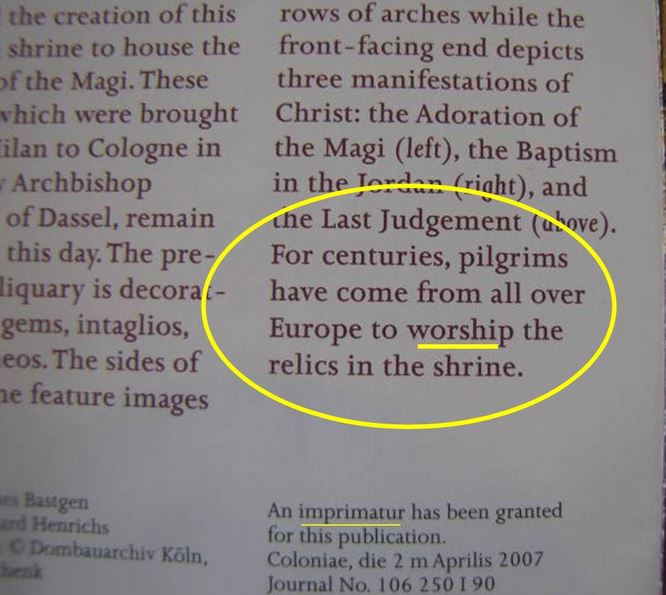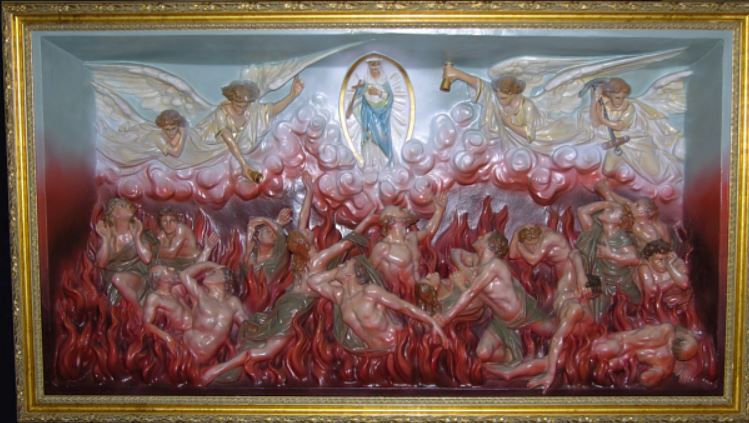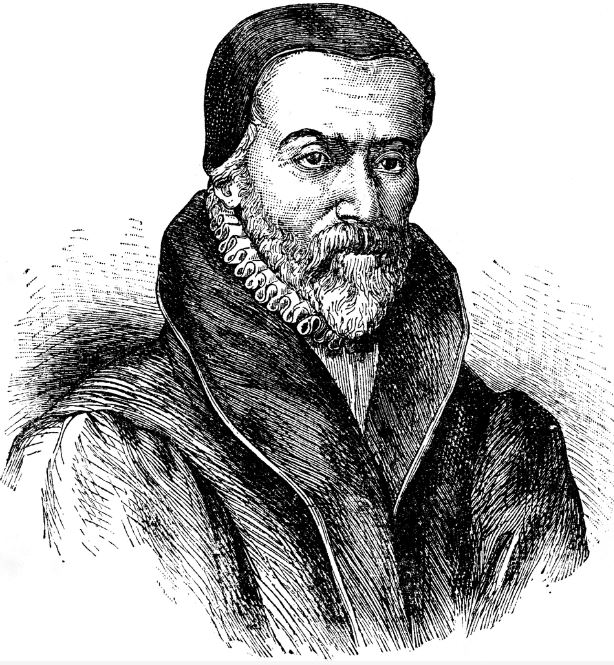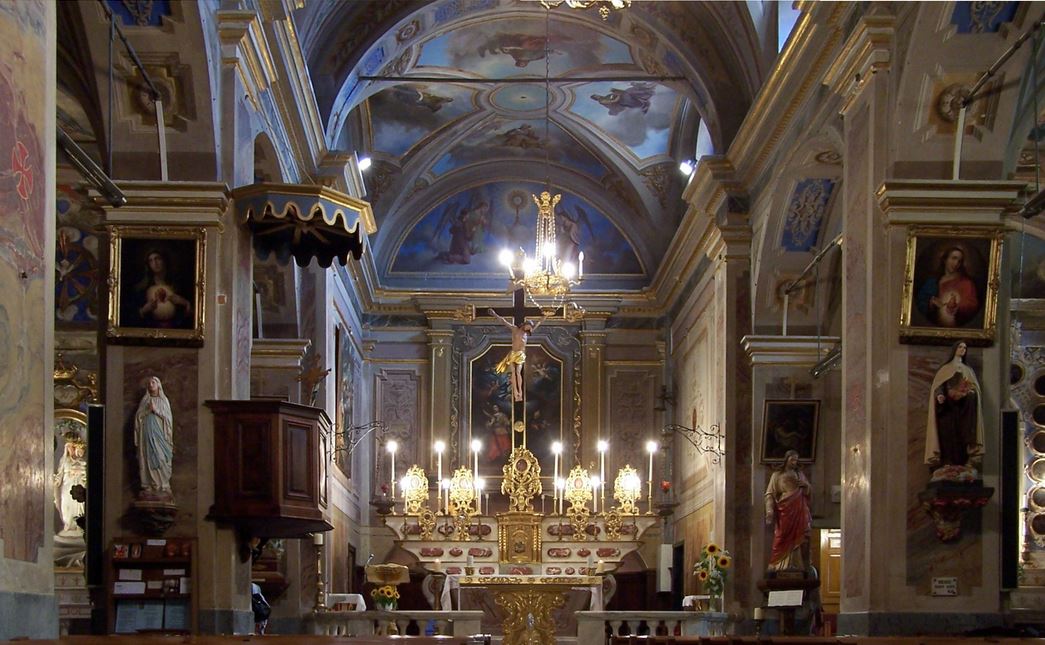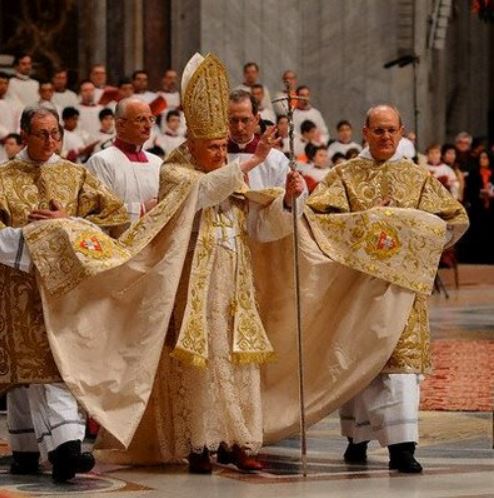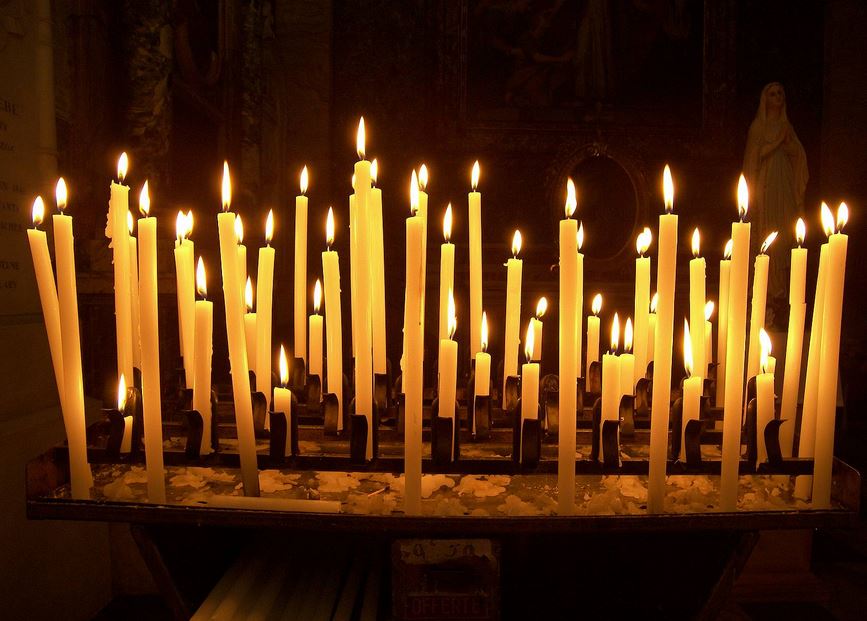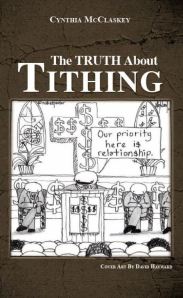 Throughout this three part series, we have discovered that there are many tactics that can be used to silence and discredit those that expose abuse and lies, or, question the dogmas, doctrines and rules of the church. History is fraught with the use of these tactics against God’s people who would not bow to the authority of the Church of Rome or its leaders. The religious crowd has become very proficient in Character Assassination because they have had centuries of practice to really get good at it.
Throughout this three part series, we have discovered that there are many tactics that can be used to silence and discredit those that expose abuse and lies, or, question the dogmas, doctrines and rules of the church. History is fraught with the use of these tactics against God’s people who would not bow to the authority of the Church of Rome or its leaders. The religious crowd has become very proficient in Character Assassination because they have had centuries of practice to really get good at it.
Throughout history and today, Character Assassination is the tool of Evil men and women. It is not a tool of God. Those that use it to spread hate and slander against others, are not God’s people. During Tyndale’s era, it always led to death. Today, in many countries, it still leads to death. This tactic, we must realize, is a tool of Evil and always lends itself to such. But let’s look at the final tactics of Character Assassination as it pertained to William Tyndale.
The Martyrdom of William Tyndale (1536)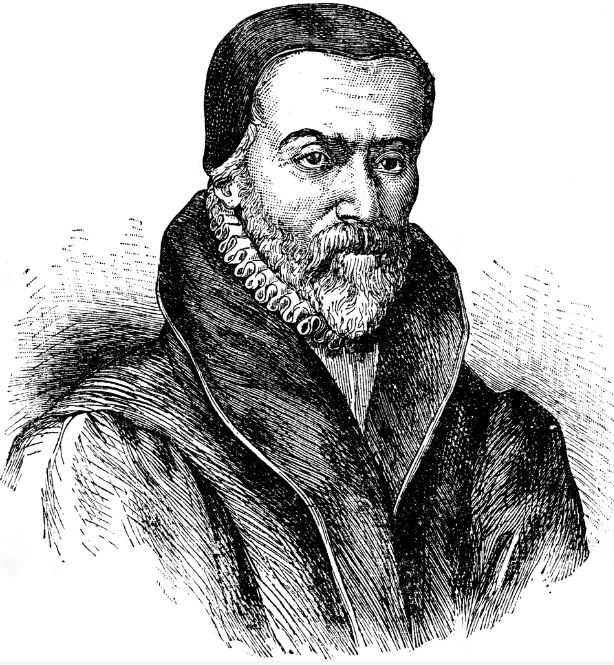
The New Foxes Book of Martyrs,
Pages 129 – 133
When Tyndale had translated the Book of Deuteronomy, he wanted to print it in Hamburg, Germany, and so started by ship in that direction. But his ship was wrecked on the coast of Holland, and he lost all his books, writings and copies, money and time, and had to start over again. He continued to Hamburg on another ship, and with the help of a Master Coverdale, re-translated all five books of Moses — Genesis, Exodus, Leviticus, Numbers, and Deuteronomy — from Easter until December of 1529, in the house of a pious widow, Mistress Margaret Van Emmerson. After finishing, he returned to Antwerp.
At the end of his English New Testament, Tyndale inserted a letter asking any who read the translation to inform him if they found the least error in it, or if there was any of the translation that they thought was wrong and should be corrected. But the papist clergy, not wanting the book to succeed, cried out against it and said there were a thousand heresies in it, and that it was not to be corrected, but totally done away with.
Tactic # 10: LIE, LIE, LIE – while continuing to perpetrate tactics #7, #8 and #9!
Some of the clergy said it wasn’t possible to translate the Scriptures into English. Some said it wasn’t lawful for the lay people to have a New Testament in their common language. Some said it would make all the lay people heretics. And to persuade secular rulers like Sir Thomas More to be on their side, which he already was since he was an unswerving Roman Catholic, they said it would make the people rebel against the king.
These English clergymen, who should have been guides of light to the people, would not translate the Bible themselves or allow anyone else to translate it. All they wanted was to keep the people in darkness and manipulate their consciences with foolish superstitions and false doctrines. In that way they could satisfy their personal ambitions and greedy covetousness, and exalt their own honor above that of any king or emperor — even above Christ Himself.
**********
Ok, it’s time for me to interject some thoughts here. WOW! I have been shouting this truth for over a year now in my books, Religion’s Cell: Doctrines of the Church that Lead to Bondage and Abuse and, The Truth About Tithing. I have also been shouting this truth on this blog at every opportunity in my articles! NOW, we see the root causes once again, that are the reason for all of this garbage the clergy have been dishing out to Tyndale; and they are the same root causes that exist today! They are the reason for the Character Assassination of those that speak out against the lies of the religious system and the abuses they hide. The root causes are: GREED, POWER and PRESTIGE. If you have not read the Balaam Phenomenon that I have on my blog, I would suggest doing so as it covers this topic in today’s terms. Now that we know what drives the church “system” and its leaders, let’s continue the story.
********
The bishops and other church officials never rested until the king agreed with them.
Tactic #11: Get the secular authorities involved! Believe it or not, but religious leaders have connections within government. When they need to use them, they do. Lawsuits are one of the many favorite tactics religious leaders use against those that speak out or expose abuse. Religious leaders also use the legal system to separate and destroy family units.
And so in 1537, a proclamation was hastily written and published under secular authority prohibiting Tyndale’s New Testament translation anywhere in England. Not satisfied with that, however, the clergy proceeded to make plans to entangle Tyndale in their nets and take his life from him.
Tactic 12: Kill the “heretic.” Unfortunately, I know personally, religious abuse survivors that have had numerous death threats because they exposed lies and abuses within their respective churches. Yes, it still takes place even today. These death threats came from “Christians.”
They did it this way.
Tactic 13: KNOW your heretic well. This helps in entrapping them.
From examining the records of London, it is obvious that the bishops and Sir Thomas More had in their custody several who had been with Tyndale in Antwerp, and they carefully questioned them to find out all they could about Tyndale, what belonged to him, in whose house he stayed, where the house was, what he looked like, how he dressed when he went out, where he usually went, and where he met with others. When they had learned all these things, they set about to work their ungodly deed.
Tactic 14: Find someone who will pretend to be the “heretics” friend and then betray him, or, bribe and existing friend to betray him. In Tyndale’s case, they did both.
In Antwerp, William Tyndale had lived about a year in the house of Thomas Pointz, an Englishman who kept a boarding house for English merchants. A Henry Philips, whose father was a merchant and did business in Antwerp, came to the city seemingly on business for his father. He had a servant with him and seemed to be a trustworthy gentleman. Tyndale often ate dinner in a place frequented by merchants, and there he met Philips, who somehow quickly gained Tyndale’s confidence and friendship. So much so, that Tyndale had him over to Pointz’s house to visit and once or twice to dinner. He even obtained temporary lodgings for Philips at the house, and so trusted him that he showed him his books and other secret things in his study.
Thomas Pointz, however, had no such confidence in Philips and asked Tyndale how he became acquainted with him. Tyndale replied that he was an honest man, well educated, and quite in agreement with his plans. Seeing that Philips had such favor with Tyndale, Pointz said no more, thinking that they probably became acquainted through some mutual friend.
After some time in the city, Philips asked Pointz to show him around the commercial area where he might make some purchases. During their walk they talked about various things, including affairs of the king of England, but nothing was said that made Pointz suspect anything. After awhile, however, Pointz began to understand that Philips was trying to determine whether for money he would help him in a plan he had. Pointz knew that Philips had plenty of money, for several times Philips had asked him for help in obtaining certain things, always of the best, and Philips always said, “I have enough money.” The plan and money were eventually discussed, and Pointz agreed to what Philips wanted him to do.
The next day Philips went to Brussels, about twenty-four miles from Antwerp, and brought back with him the procurator-general, who was the emperor’s attorney, and several officers of the law. About three days later Pointz went to Barrois, eighteen miles from Antwerp, where he said he had business that would keep him away from his house for four to six weeks.
A few days after Pointz left, Henry Philips came to Pointz’s house about midmorning and asked his wife if Master Tyndale was there. When told that he was, he left and positioned the officers he brought from Brussels in the street and around the front door. About noon he came back and went to Tyndale’s rooms and asked him to lend him forty shillings, “for,” he said, “I lost my wallet this morning on the trip from Mechelen.” So Master Tyndale gave him forty shillings, which was easy to get from him if he had it, for he was a trusting man and inexperienced in the deceptive ways of the world. Then Philip said, “Master Tyndale, you shall by my dinner guest here today.”
Tyndale replied, “No, I’m going out today to dinner, and you are welcome to come with me and be my guest.”
So when it was dinner time, they left Tyndale’s rooms to go out. At the front of Pointz’s house was a narrow entryway that only one could go through at a time. Tyndale courteously offered to let Philips go first, but Philips made a show of it and insisted that Tyndale go first. Master Tyndale was a short man, and Philips was quie a bit taller. When they got to the door where Philips had positioned the officers in such a way that they could see who came out, he pointed downward toward Tyndale from behind him to let the officers know that he was the one they should arrest. After they put Tyndale into prison, the officers told Thomas Pointz that they felt sorry for Tyndale when they saw how simple and trusting he was.
After Tyndale’s arrest, the procurator-general and some officers went to Tyndale’s rooms and took away everything that belonged to him, including all his writings and books. They then took Tyndale to the castle of Vilvorde, eighteen miles from Antwerp.
In prison, Tyndale was offered the services of a procurator to represent him, and an advocator to speak for him, both of which he refused, saying he would speak for himself. During his imprisonment, Tyndale preached so much and well to his jailers and those who came to know him, that they reported that if Tyndale wasn’t a good Christian man they had no way of knowing who was.
Tactic 15: Use the legal system against the “heretic” to finish the job. Believe it or not, many abusive men and women have used the legal system to intimidate and destroy people’s lives. If you can destroy someone legally, you can utterly destroy them.
Although Tyndale answered the questions of his inquisitors truthfully and with good use of reason, no reason was enough to save him from their hate and determination to destroy him and his work. Although he did not deserve to die, he was condemned by reason of a decree made by holy Roman Emperor Charles V at the Diet of Augsburg in 1530, when the emperor and the Roman Catholics rejected the Protestant position that was presented to the assembly.
On October 6, 1536, in the town of Vilvorde in the Netherlands, William Tyndale, God’s first translator of the New Testament into English, was brought to a place of execution, tied to a stake, strangled by the hangman to the point of death, and then burned in fire for doing God’s work. As he met the Lord, Tyndale cried with a loud voice, “Lord! Open the king of England’s eyes!”
So powerful was Tyndale’s doctrine and the godliness of his life, that during the year and a half of his imprisonment, it is said that he converted the jailer and his daughter and several others of his household.
Concerning his translation of the New Testament, because his enemies found so many faults in disagreeable ways and claimed it was full of heresy, William Tyndale wrote from prison to his friend, John Frith, “I call God to record against the day we shall appear before the Lord Jesus, that I never altered one syllable of God’s Word against my conscience, nor would I do so this day if all that is in earth, whether it be honor, pleasure, or riches might be given to me.”
**********
Now, let me wrap up this story by bringing this subject of Character Assassination around to today. Injustice is always a tragedy. When those that try to expose corruption, abuse, lies and deception step forward, it automatically brings with it the possibility of Character Assassination. But, don’t let it stop you from coming forward because, if enough do, it can totally change the playing field for the better. There really is power in numbers! If you see someone slandering another person and their work, think about William Tyndale and this tactic. If you see a blog that attacks others by name, and tries to discredit their works, think about William Tyndale. REAL Christians should NOT do these things. They should have the genuine LOVE, GRACE and CHARACTER to reason, agree to disagree, and move on. There is a way to disagree with someone in love and, history also tells us how it is done. Read, Handling Opposing Beliefs, that I wrote back on July 12th. It will tell you how it’s done.
Anyone that cannot disagree with others while still being respectful and gracious toward them, has a problem. They are not concerned with treating those they oppose with respect, honor and dignity.
Any person whose main goal is to attack and discredit through any of the mentioned tactics of Character Assassination, those with opposing views or beliefs, those that expose lies in doctrine or dogma, or, those that expose abuses, should be ignored. Don’t help them spread their hate toward others by sharing their articles expressly aimed at hurting, humiliating, discrediting and destroying someone else.
Also, did you know that you CAN disagree with someone while not naming them? Those who use names with the express intent to hurt the individual and publicly humiliate them are practicing Character Assassination. Let’s do our best not to participate in Character Assassination by spreading gossip and slander or, spreading hateful blogs and blog articles whose sole purpose is to publicly humiliate and destroy an individual’s credibility. Otherwise, this makes us complicit in this evil called, Character Assassination, and, speaks volumes of the type of character we are projecting to others.
It takes a conscious effort to “see” the effects of our actions toward others. Many participate without even realizing that they are! It’s time to be more aware of this tactic in our lives. It’s time to tell ourselves that we will not participate in it any more. It’s time to treat people with love, respect, honor and dignity while still being able to disagree.
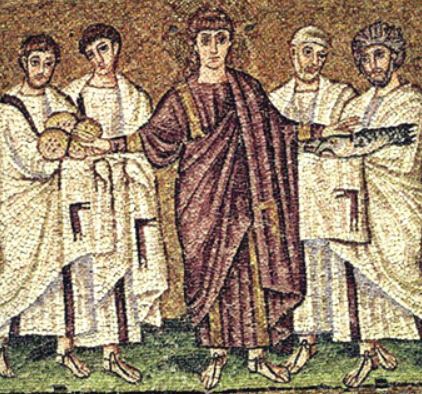 I wanted to share a little of information I learned from reading Lost Christianites by Bart D. Erhman. Most people do not realize how diverse the belief systems of the early Christians were. So, here is a list of some of them to help us understand what was believed. Christian theological beliefs vary just as widely today as they did then; thus, the reason for all the different denominations within each religious sect. There were many different theological beliefs that were embraced by the early Christians. The second and third centuries show us that there were Christians that:
I wanted to share a little of information I learned from reading Lost Christianites by Bart D. Erhman. Most people do not realize how diverse the belief systems of the early Christians were. So, here is a list of some of them to help us understand what was believed. Christian theological beliefs vary just as widely today as they did then; thus, the reason for all the different denominations within each religious sect. There were many different theological beliefs that were embraced by the early Christians. The second and third centuries show us that there were Christians that:

